Some time ago, we traveled through 15 cities in Franconia and were already surprised by how diverse and exciting this region in Bavaria is. This time, we headed all the way north, to Upper Franconia—more specifically, to the beautiful Franconian Forest.
I (Bolle) spent three days there exploring amazing places like the Höllental Valley, the spa town of Bad Steben, and the divided village of Mödlareuth. I really enjoyed the mix of relaxation, nature, activity, and history.
In this post, I’ll show you my personal highlights in the Franconian Forest and give you tips for your own short vacation. Enjoy browsing!
- Overview and travel tips
- Who is the region suitable for?
- My 10 highlights in the Franconian Forest
- 3 exciting cities for a day trip
- Our hotel tip: Relexa Hotel Bad Steben
- Travel reading for your vacation
- Conclusion: Is a trip to the Franconian Forest worth it?
Overview and travel tips
General information about the Franconian Forest
The Franconian Forest is located in northern Bavaria, on the border between Franconia, Thuringia, and Saxony. A region that, to be honest, I hadn’t really considered. Here, dense forests, rolling hills, and historic cities converge. If you enjoy hiking, cycling, or simply want to take a deep breath, the Franconian Forest is the right place for you.
The area was recognized as the first “Quality Region for Hiking in Germany” in 2015. No wonder, because the Franconian Forest is a true paradise for outdoor enthusiasts. There are over 4,000 kilometers of marked hiking trails, including long-distance trails like the FrankenwaldSteig and the FrankenwaldSteigla, which lead to the most beautiful sections of the region.
And enjoyment and culture are also not neglected in the Franconian Forest. In Kronach, Kulmbach, or even Coburg, you can stroll through half-timbered streets, stop at quaint inns, and sample Franconian cuisine. All in a relaxed atmosphere, without any hustle and bustle. If you enjoy traveling away from the crowds, you’ll definitely love the Franconian Forest.
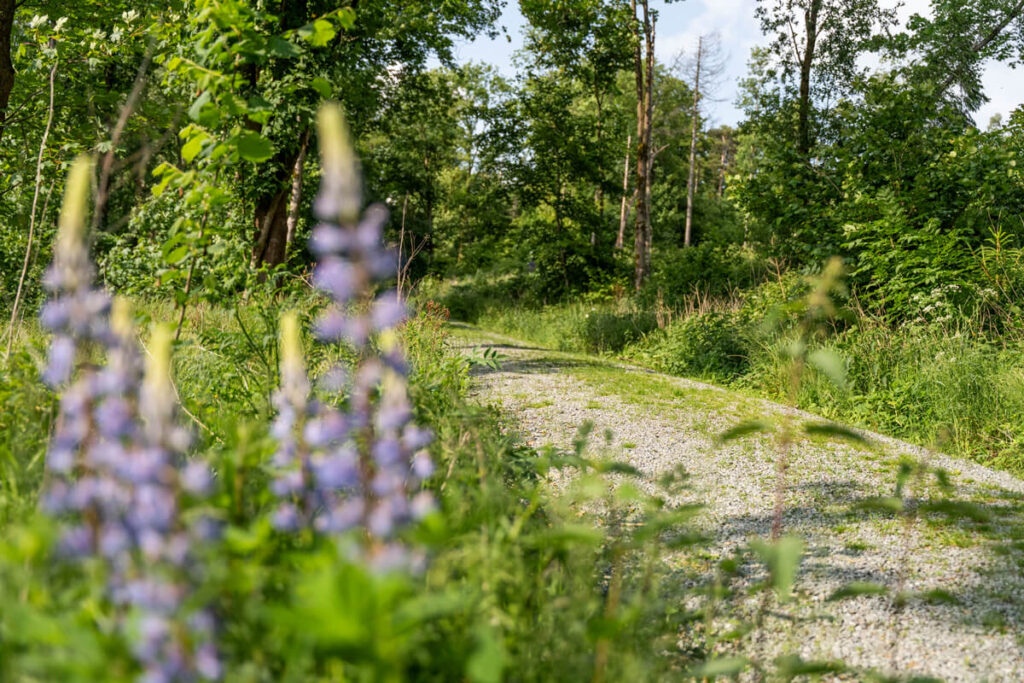
Best time to visit the Franconian Forest
The Franconian Forest is a beautiful destination all year round. Depending on your plans, certain months are particularly worthwhile. In spring, from April onwards, things slowly turn green, nature awakens, and temperatures are pleasant for hiking or cycling. Even in May and June, the trails are still quiet.
Summer finally brings warmer days and long evenings. Perfect if you want to be outdoors. The forests offer pleasant shade, and you can cool off in one of the pools and lakes. During the summer months, many festivals and events also take place in the region.
But things also get really beautiful in autumn. From September onwards, the forests take on new colors, the air becomes clearer, and the atmosphere is somehow very special. If you enjoy hiking or photography, this is certainly a really wonderful time. Winter also has a very special charm, because when the first snow falls, everything seems almost magical.
In Bad Steben, you can cross-country ski on around 50 kilometers of trails when there is snow. There are classic routes and also skating circuits. If you prefer a leisurely stroll, you’ll also find beautiful winter hiking trails. In any case, you should treat yourself to a break at the popular thermal spa in Bad Steben.
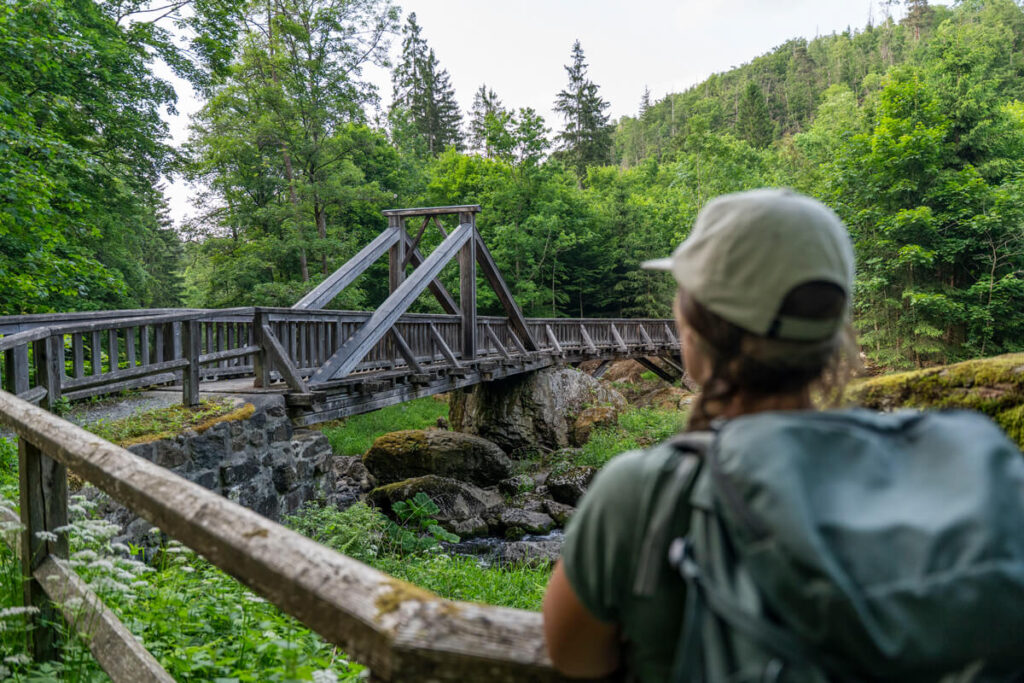
Arrival & Mobility
Getting to the Franconian Forest is straightforward, especially if you’re coming from southern or eastern Germany. Even my journey from Rostock on the Baltic Sea worked very well with the Deutsche Bahn trains.
By car: The A9 motorway runs directly past the region. From the Naila or Münchberg exits, you’re quickly surrounded by greenery. You can also easily reach many places via the A72 or A73. Once you’re there, you’re most flexible by car, especially if you want to head to smaller villages or more remote hiking parking areas.
By train: There are train stations in places like Kronach, Kulmbach, Hof, or Bad Steben. Regional trains take you to the most important towns, but you’ll need a bit of patience, as not every connection is perfect. Book train tickets here*.
In the Franconian Forest without a car? No problem! Leisure and cycling buses run between the larger towns between May and November. Organized excursions in the surrounding area are also offered (click here for the tours). You can also rent e-bikes at the Bad Steben Tourist Information Center.
Who is the region suitable for?
The Franconian Forest is perfect for you if you enjoy being outdoors, seek peace and quiet, and don’t like mass tourism. Hiking enthusiasts will get their money’s worth here, as will those who enjoy cycling or simply want to stroll through the forest. If you want to unwind, enjoy a good meal, or relax for a few days at the thermal baths, you’ve come to the right place.
The Franconian Forest also has a lot to offer families. There are many easy hiking trails, great playgrounds, and plenty of space to run around (among the family-friendly amenities). Couples can relax in cozy accommodations, enjoy nature, and try out one or two wellness options in between.
My 10 Highlights in the Franconian Forest
The Franconian Forest honestly surprised me. Lots of nature, little hustle and bustle, and always a few special places in between. Here are my personal favorites that you definitely shouldn’t miss.
1. Spa Town of Bad Steben
Bad Steben was my starting point for the three days and it served me really well. The town is super quiet, but also centrally located if you want to do a lot in the area while still staying in a relaxed atmosphere. I particularly liked the mix of nature, peace, and “little moments of well-being.”
You can easily reach everything on foot. The spa gardens are perfect for a quick morning stroll, and if you feel like it, you can then take a dip in the thermal baths. I didn’t go myself, but they’re quite popular and certainly a good place to stop after an active day.
Bad Steben also has some charming spots: historic spa villas, old avenues, and that classic Bavarian spa charm. In the evening, there are a few nice restaurants and cafés, perfect for a relaxing end to the day. I can well understand why people come here for a spa treatment or simply to spend a few relaxing days.
More tips for Bad Steben:
- Glas-Cafe Liebold
- Pizzeria Da Carmelo
- Brauhaus Budenschuster
- Konditorei Café Reichl
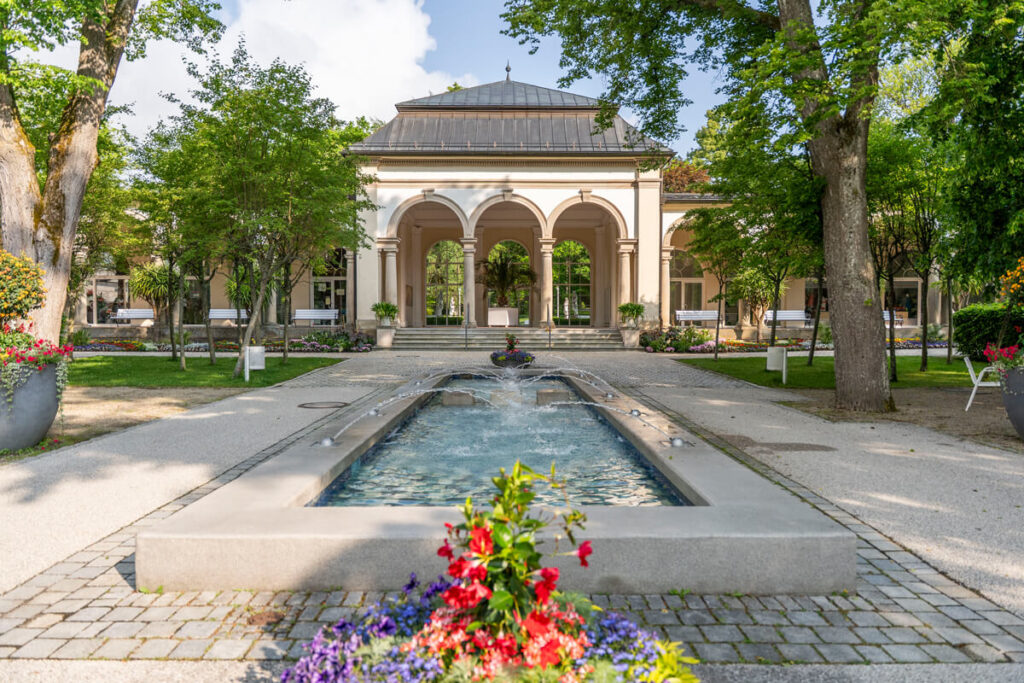
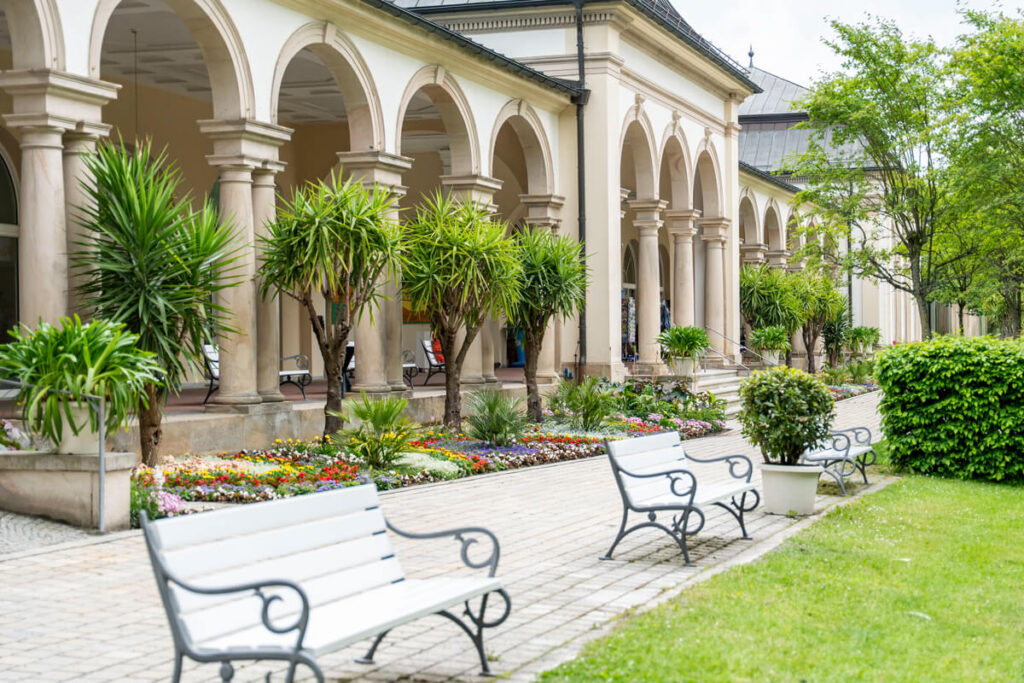
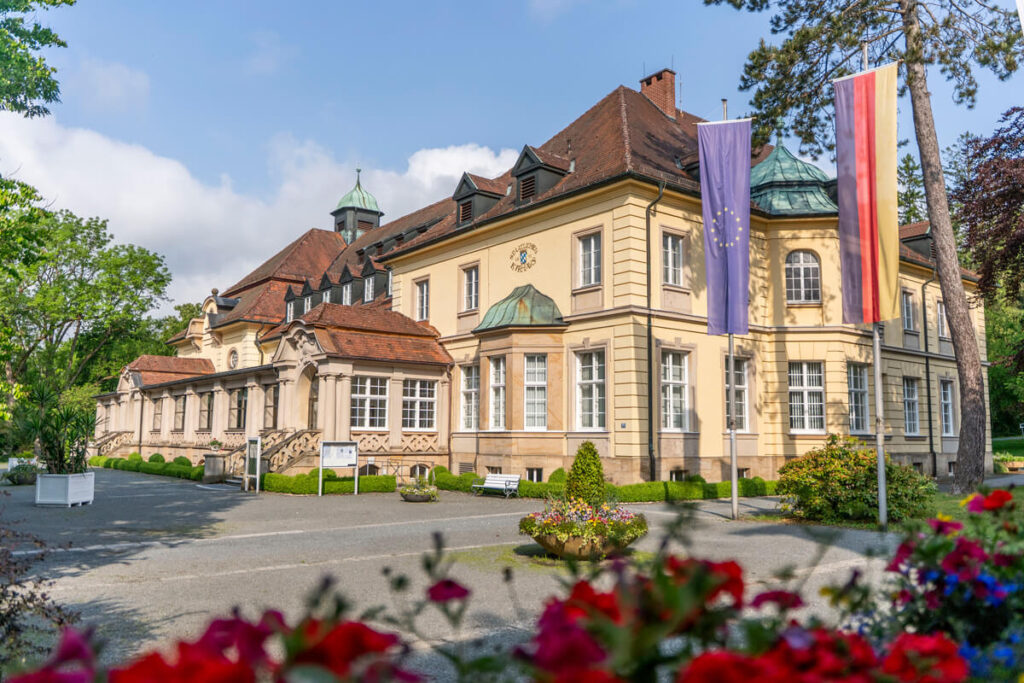
2. Escape Games from Dream Labs
The Escape Games from Dream Labs in Bad Steben are among the best in the world. While this may sound like a lot of advertising, they have actually won multiple awards and are internationally renowned. The game “The Legend of the Heartless Pirate” is particularly popular and is regularly listed among the top rooms worldwide.
You start in a futuristic dream pod and are transported from there into another world. Everything has been thought through down to the smallest detail. The scenery, light, sound, even scents and interactive elements ensure that you are completely immersed in the game.
In addition to the indoor experiences, Dream Labs also offers outdoor games that guide you through Bad Steben. You solve exciting puzzles in the fresh air and get to know the place in a whole new way. The reviews speak for themselves, and I thought it was really cool too (also suitable for families).
- Address: Wenzstr. 1a, 95138 Bad Steben
- Booking: Book an appointment online here
- Prices: Outdoor Games €99 | Indoor Games from €119 (2 people)
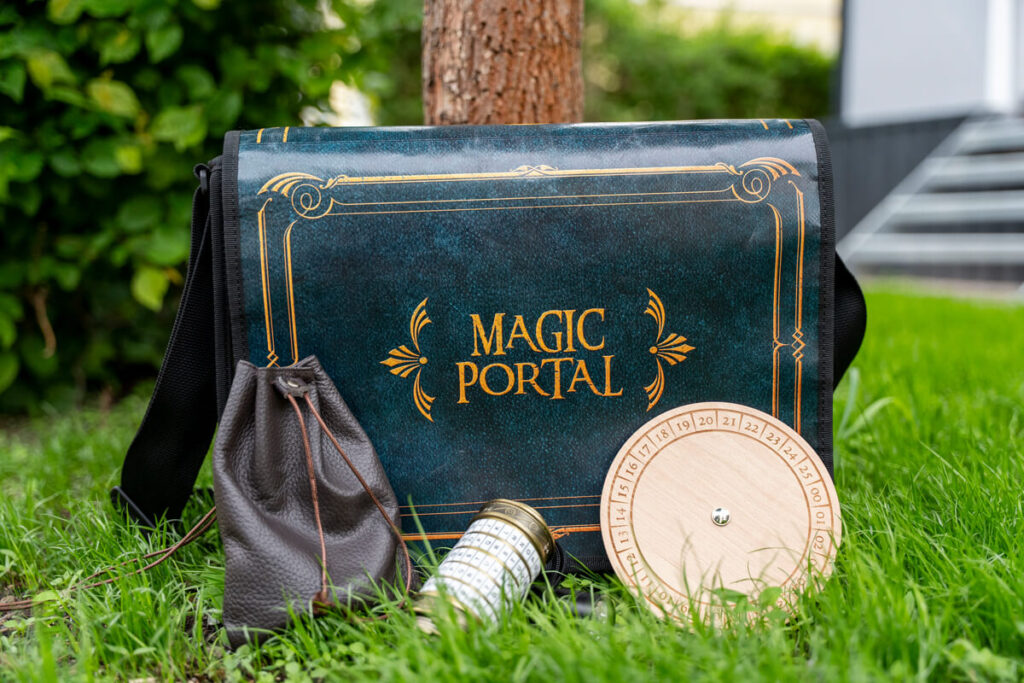


3. Sunset at Langesbühl
A beautiful place for the sunset is Langesbühl, very close to Bad Steben. A quiet, open landscape with a sweeping view of the surrounding area awaits you. From the 698-meter-high Langesbühl, you have a fantastic panoramic view of the Franconian Forest, the Thuringian Forest, and the Fichtel Mountains.
The atmosphere is particularly beautiful in the evening and is perfect for a long walk or a short bike ride to round off the day. By the way, in early summer, purple lupins bloom everywhere, which makes the whole thing even more special in my eyes.
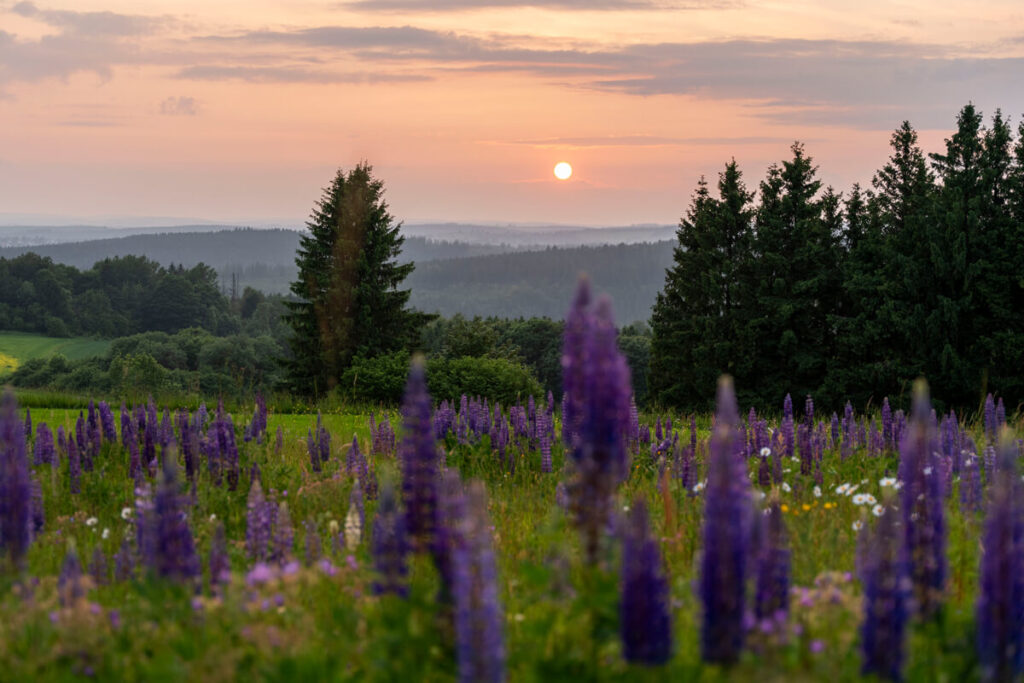
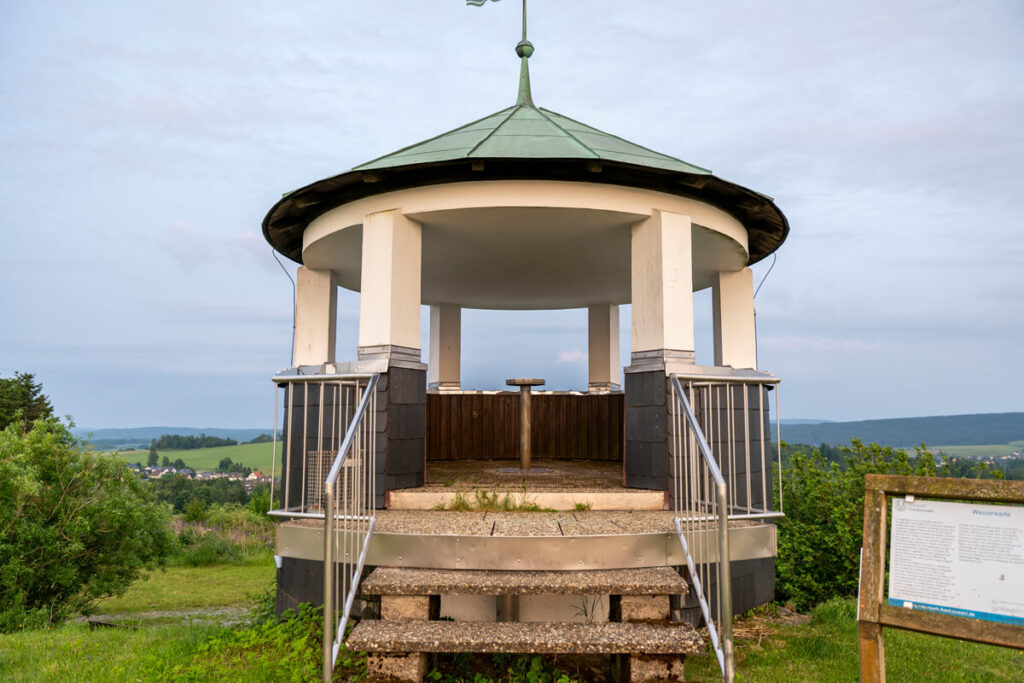
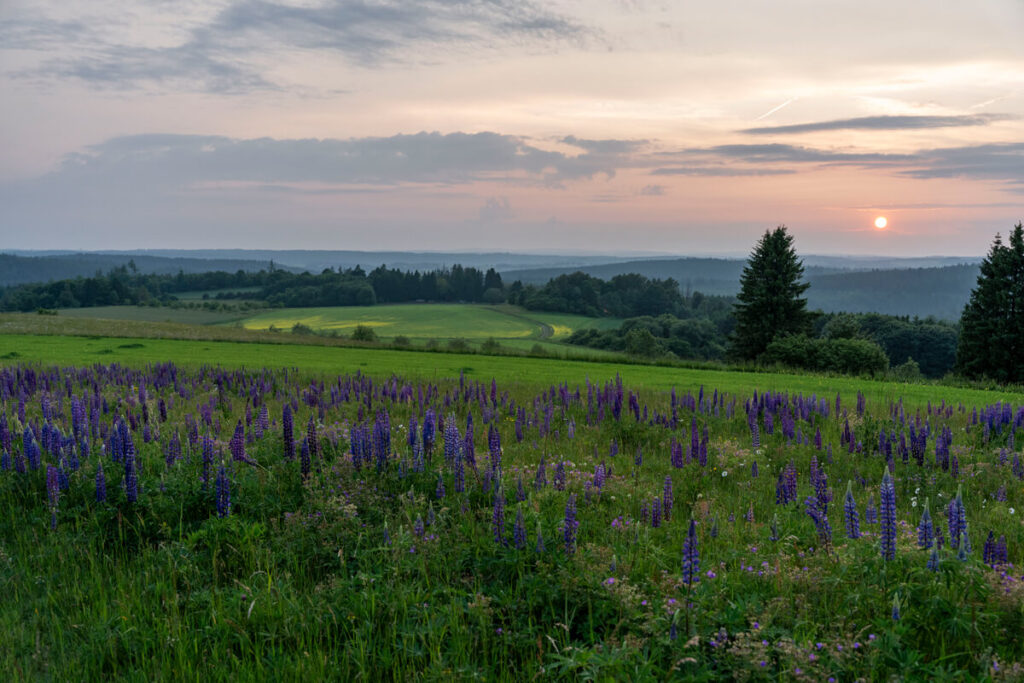
4. FrankenwaldSteigla Höllentour
One of my biggest highlights in the Franconian Forest was definitely the circular hike through the Höllental valley. The almost seven-kilometer-long route leads through varied, dense forests, past rocks, small streams, and over narrow paths right through an impressive gorge.
The starting point is either the Nature Park Information Center at Blechschmiedthammer train station or the hikers’ parking lot in the village of Hölle. From there, the trail continues along the rocky path with its stone steps and viewpoints to the Röhrensteig trail, which will take you back to the starting point.
Along the way, it’s worth taking detours to the King David Lookout, the Deer Leap, and the Devil’s Bridge with its shelter and barefoot path. The tour takes around three hours. It’s a constant uphill and downhill, so you should definitely wear sturdy shoes and pack some provisions.
- View the “FrankenwaldSteigla Höllentour” hiking route here
- Start/Finish: Hölle hiking car park or Blechschmiedthammer train station
- Length: 7 km through the valley (9-10 km with detours)
- Duration: approx. 3 hours (slightly longer with detours)
- Highlights: Teufelssteg, King David Viewpoint, Hirschsprung
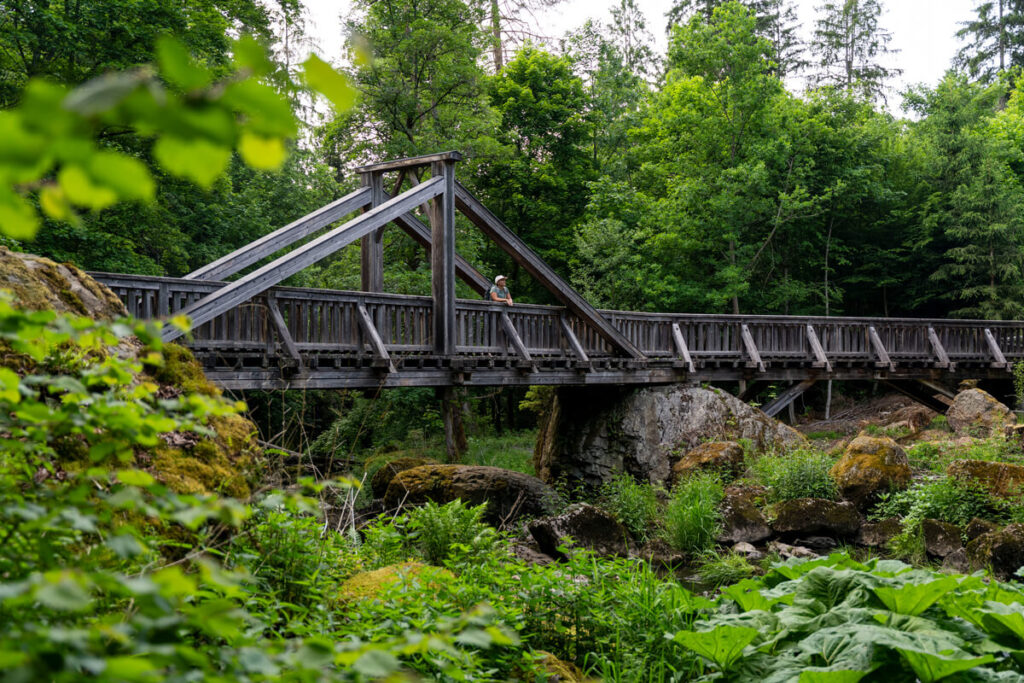
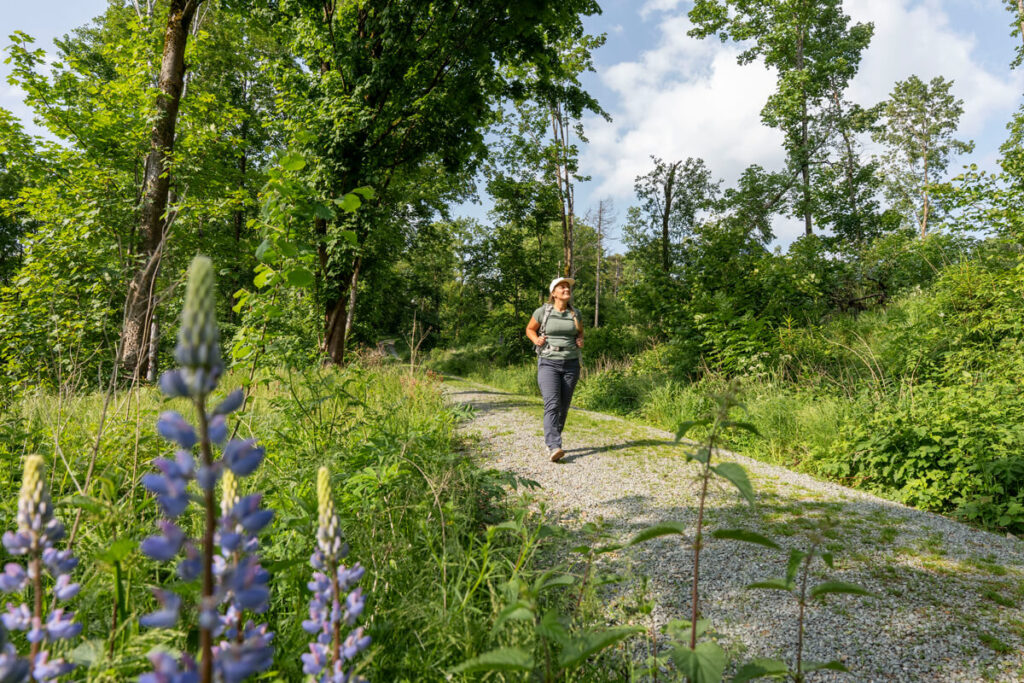
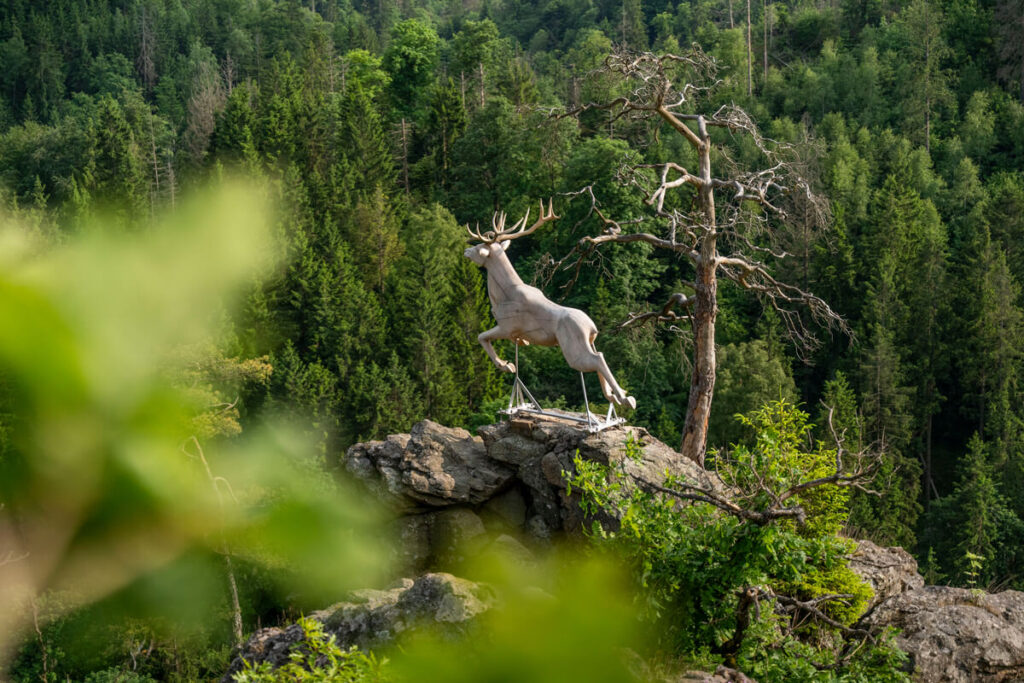
5. The Green Belt in the Franconian Forest
“From the death strip to the lifeline” – this is the motto of the Green Belt, which today stands as a symbol of peaceful reunification and nature conservation. It is not a fixed route, but rather an entire region along the former inner-German border. The green corridor stretches over 1,400 kilometers from the Baltic Sea to the Bavarian Forest.
In the Franconian Forest, this belt runs through tranquil forests, meadows, moors, and valleys. Valuable habitats have been able to develop undisturbed where border fortifications once stood. Immediately after the fall of the Berlin Wall, the project was launched by the BUND to protect this nature and at the same time set a sign of remembrance.
Today, the Green Belt is Germany’s largest biotope network. Over 1,200 endangered animal and plant species find refuge here, including lynx, black stork, orchids, and arnica.
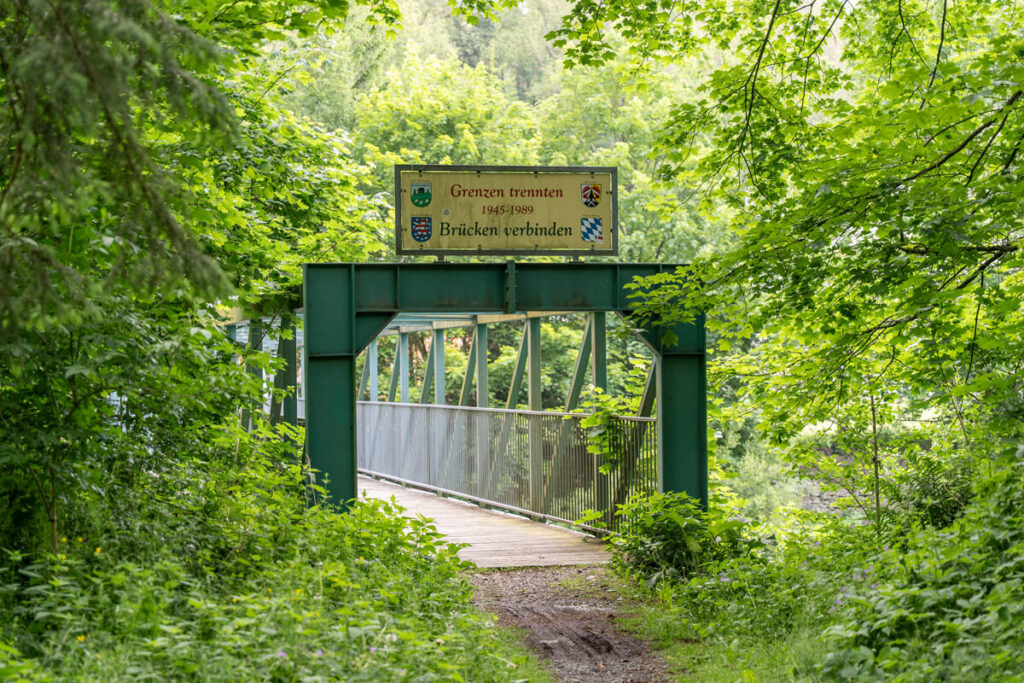
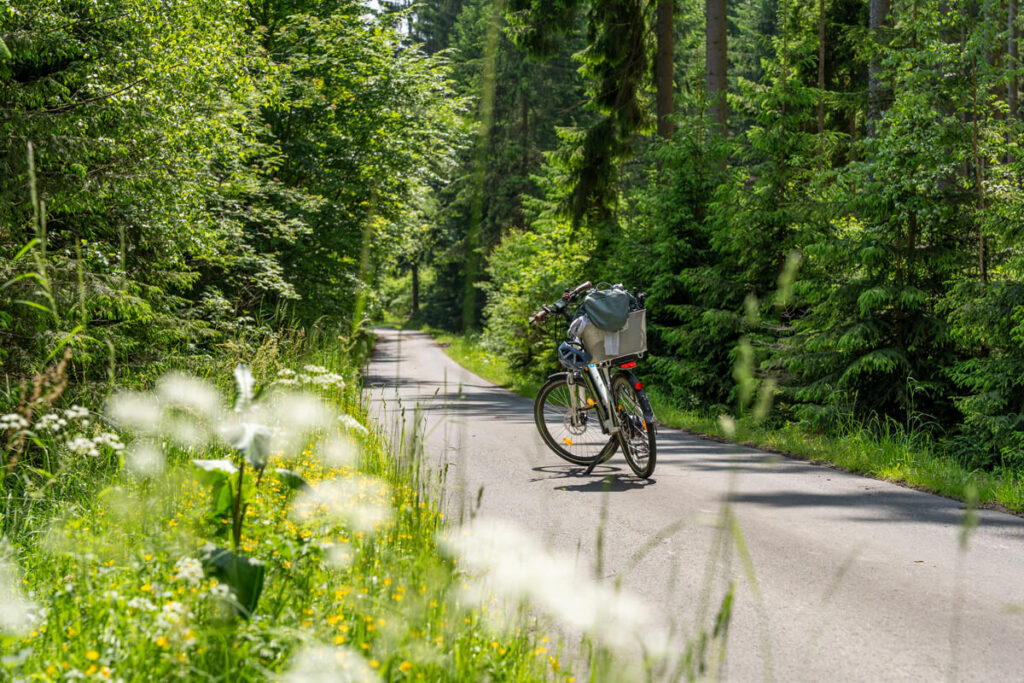
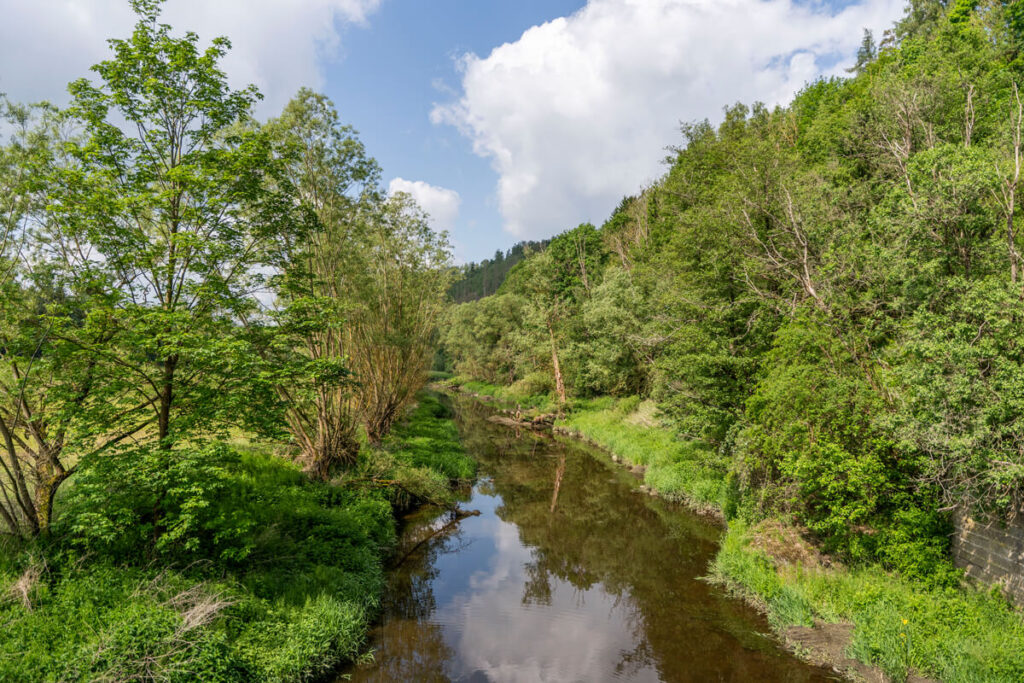
At the same time, the Green Belt is a living monument to the overcoming of Germany’s division. Former watchtowers, memorial stones, and vanished sites recall the history along the border. Many sections are now protected, and work is underway to have the area recognized as a UNESCO World Heritage Site.
When you’re out and about in the Franconian Forest, for example in Bad Steben, Lichtenberg, or Hirschberg, the Green Belt is right under your nose. I recommend a leisurely bike ride to the divided village of Mödlareuth with stops in Lichtenberg, Blankenstein, Pottiga, and Hirschberg.
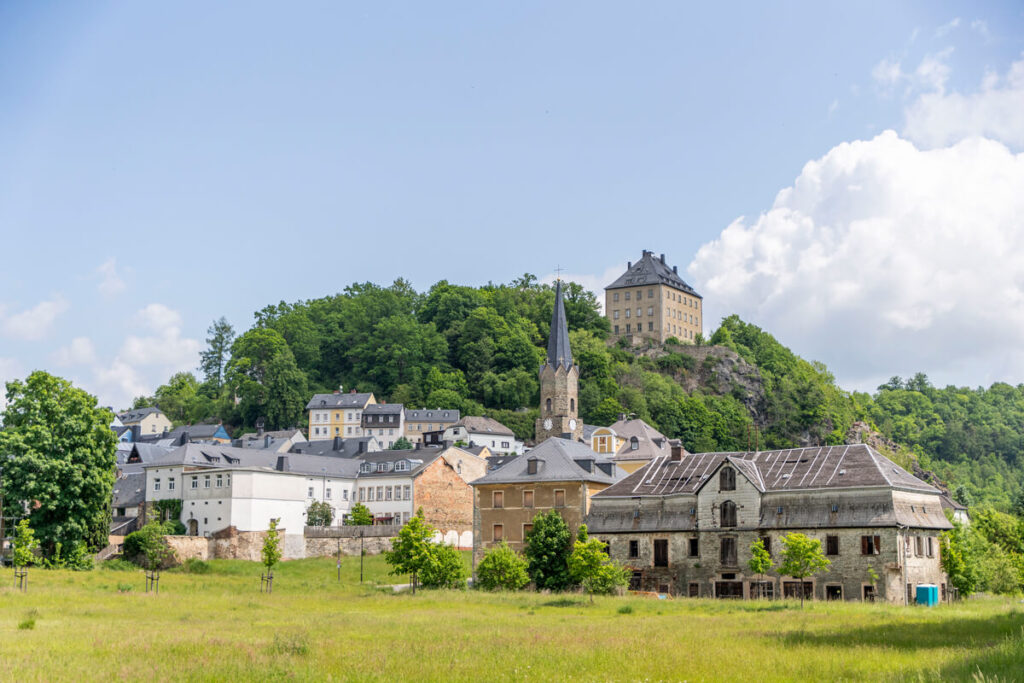

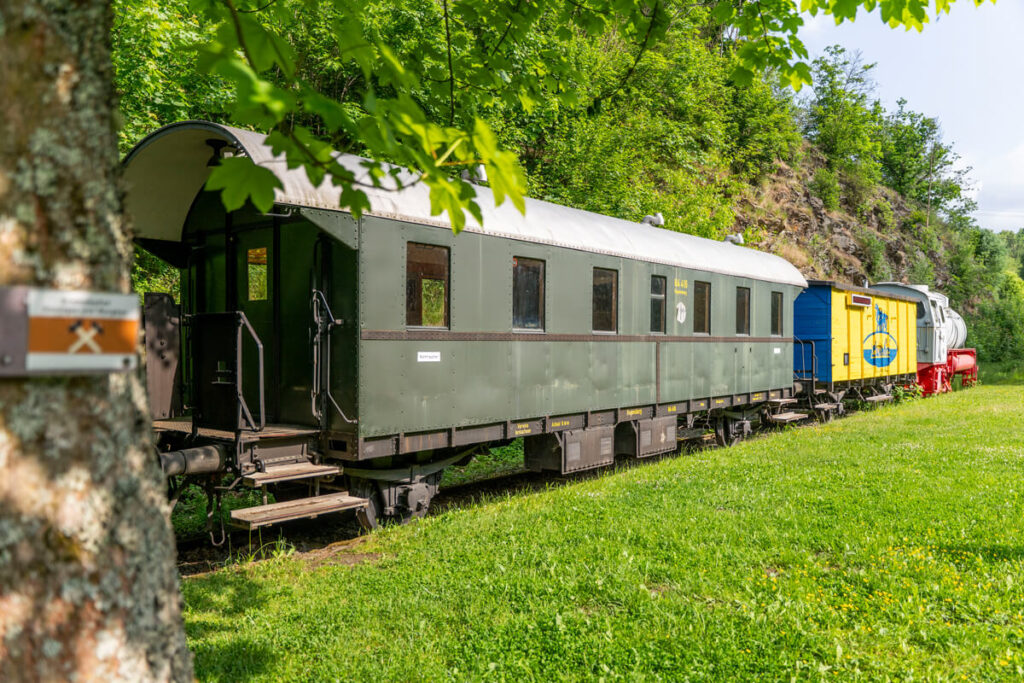
6. Pottiga Observation Platform – Skywalk
Another highlight in the Franconian Forest is the observation platform on Wachhügel, often simply called the Pottiga Skywalk. It is located above the picturesque Saale Valley and was formerly part of the inner-German border. You reach it via a green metal staircase with around 30 steps and then stand on a platform weighing around twelve tons, hovering a little above the abyss.
Right next to the Skywalk, there is a pavilion with a shelter, a barefoot path, and two e-bike charging stations. You can also use Wi-Fi for free here. The view is particularly beautiful in clear weather. Below, the Saale meanders through the valley. Surrounded by green hills and small villages. A truly beautiful place for a break with a view.
- Address: 07366 Rosenthal am Rennsteig
- Admission: free (incl. Wi-Fi, e-bike charging station)
- Opening hours: 24 hours a day


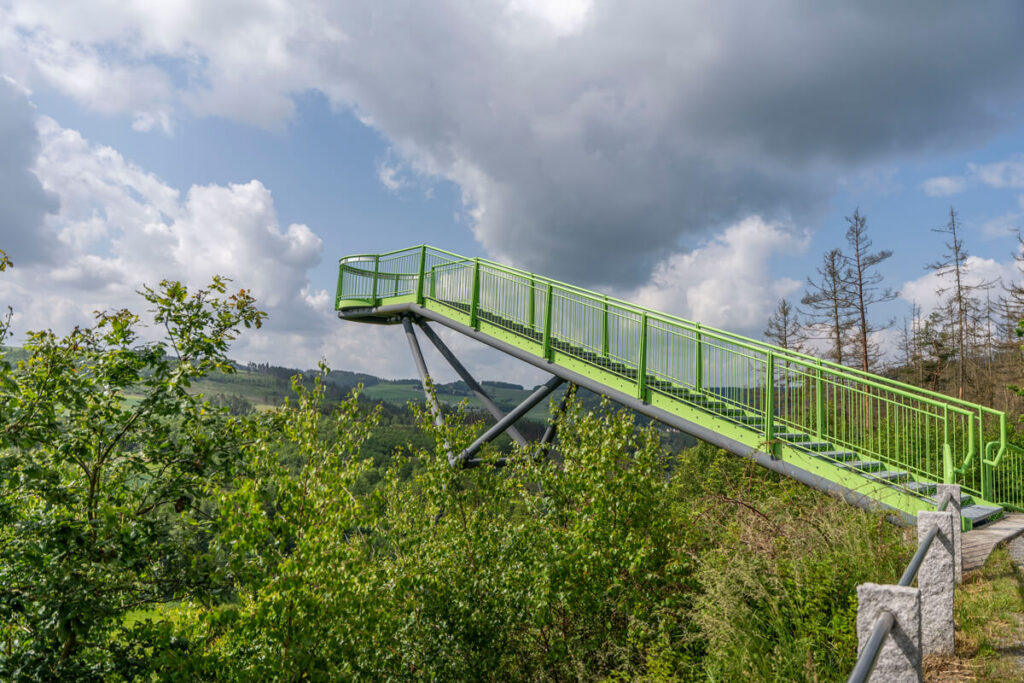
7. Hirschberg Suspension Bridge
I discovered the suspension bridge at Hag by chance while exploring the so-called Green Belt by bike. The narrow steel structure is firmly anchored in the rock and leads you from the old town in Hirschberg directly into the green idyll of Hag. Especially by bike, the bridge is a wonderful stop on the route along the Saale.
Even though the bridge is on the Thuringian side, the detour is definitely worth it. The Hag is a wooded slope with a mixture of deciduous and coniferous trees, old rocks, and small streams. This used to be a popular destination for walks; today, a small primeval forest path leads through the area.
- Address: Brauhausgasse 8, 07927 Hirschberg Saale
- Parking: Parking lot Kulturhaus Hirschberg
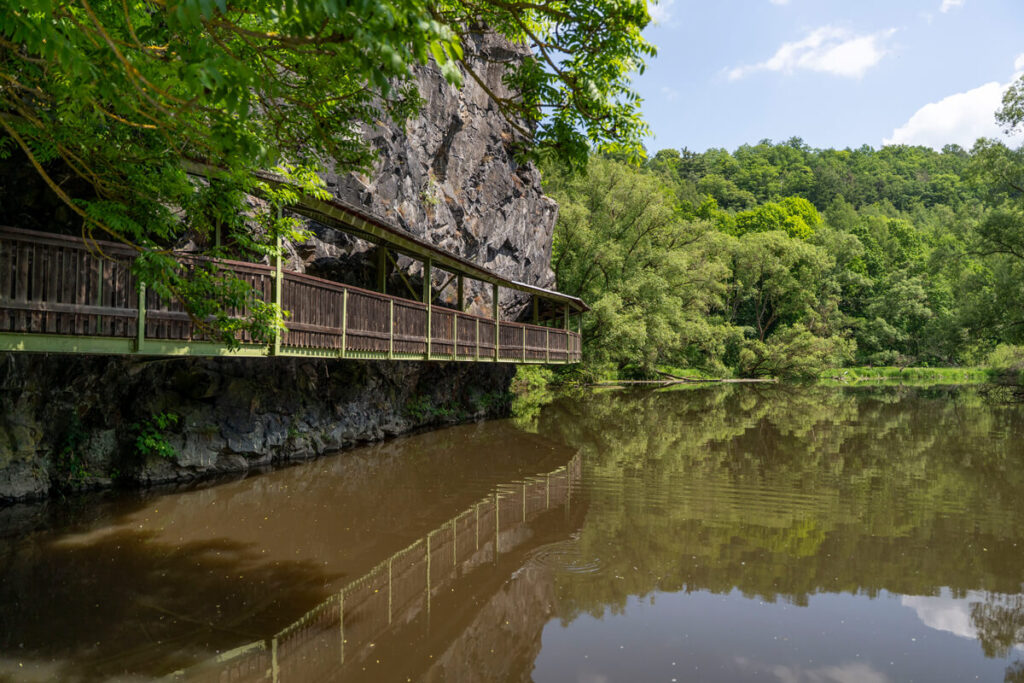
8. Divided Village of Mödlareuth
Mödlareuth is a tiny village with just under 50 inhabitants, which to this day is divided by the Tannbach stream into a Bavarian and a Thuringian part. Long before the German border was created, a state border ran there.
After the war, it became a heavily guarded border with a wall, fences, and watchtowers. Because of the gray concrete wall, the Americans once called it “Little Berlin” because even after the Cold War, there was no way through.
What was particularly tragic was that many people in the town were related or close friends, but could no longer see, meet, or speak to each other if they lived on different sides of the border. Even direct neighbors were sealed off from each other (video about Mödlareuth).
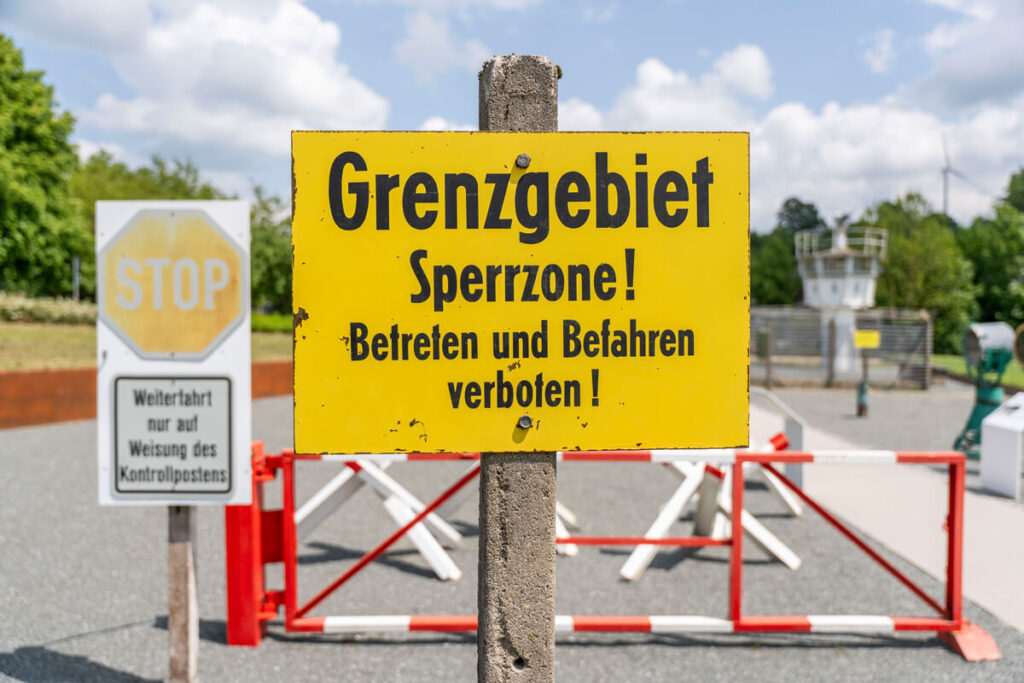
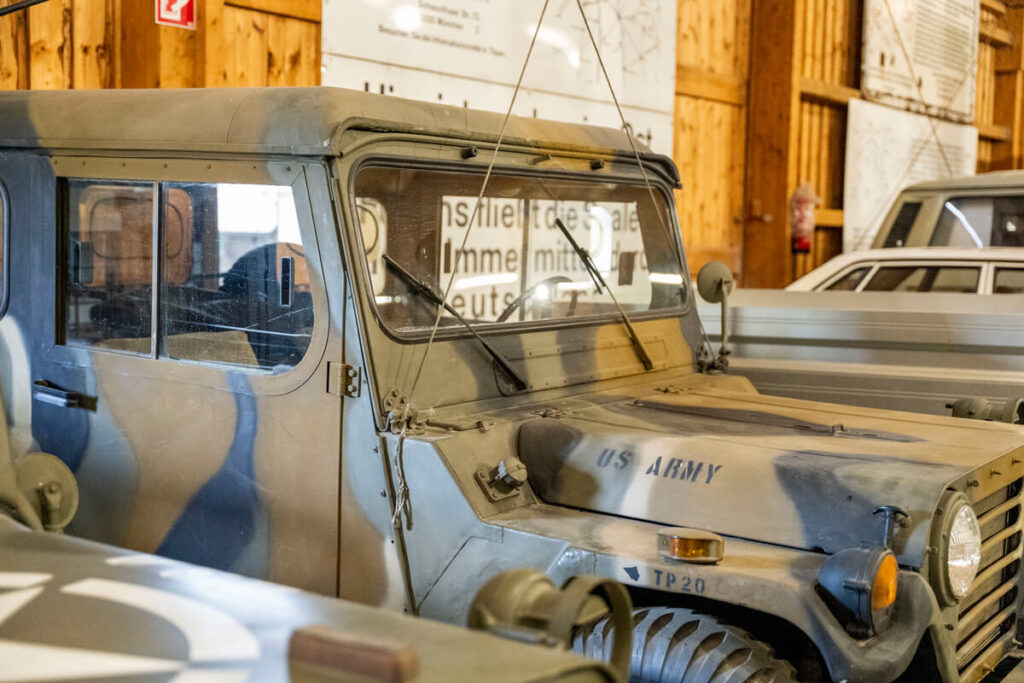
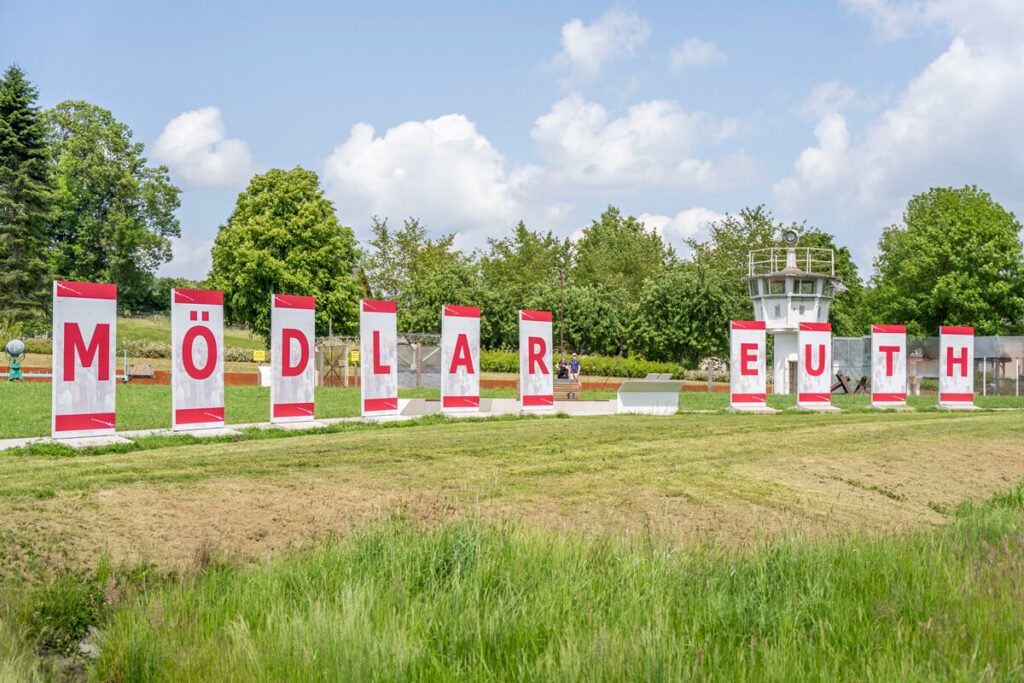
It was only after the fall of the Wall in December 1989 that people were finally able to reunite here. Shortly afterwards, residents from East and West Germany tore down pieces of the Wall; a section has been preserved today as a memorial.
Today, the German-German Museum stands there with the original Wall, watchtower, and memorials, impressively telling the story of how much history has changed people’s everyday lives.
- Address: Mödlareuth 13, 95183 Töpen
- Opening hours: vary depending on the season – during opening hours
- Admission price: €4 per person; 3 € reduced
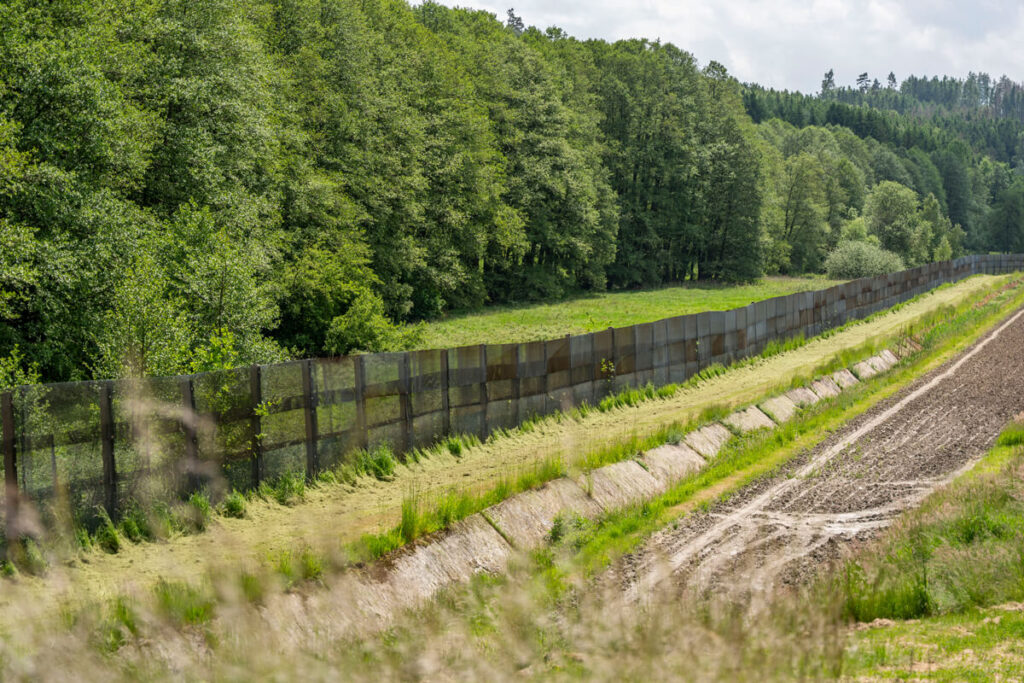
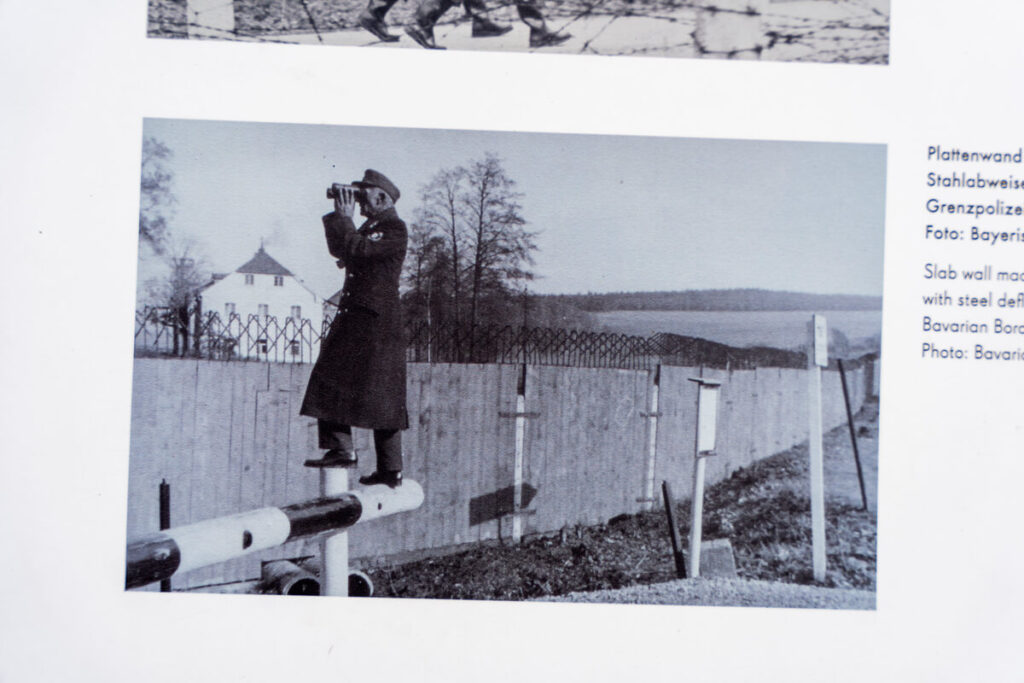
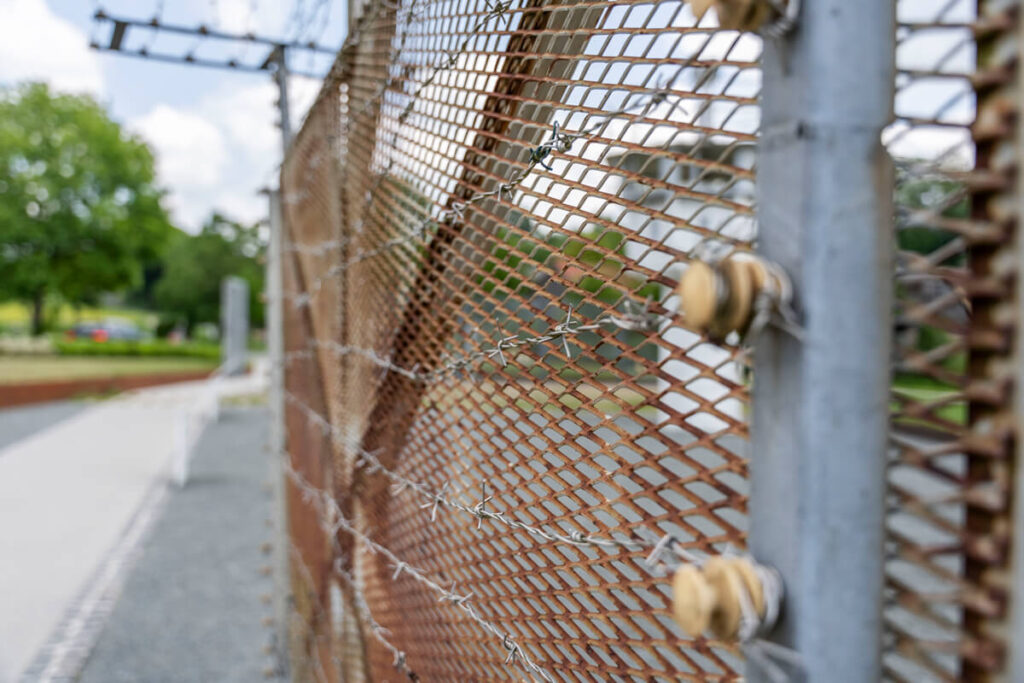
9. Balloon Landing Site near Naila
In the Franconian Forest, I visited another exciting place that is closely linked to German history. In September 1979, two families from the GDR managed a spectacular escape in a homemade hot-air balloon.
After about 20 kilometers in the air, they landed at night very close to Naila. This place is now considered a symbol of freedom. An information column stands at the exact spot where the Wetzel and Strelzyk families landed, commemorating the daring escape.
It’s best to combine your visit with a cycling or hiking tour through the region. From Bad Steben, it’s only a 30-minute bike ride away. Since May 2019, the balloon envelope (i.e., the majority of the balloon) has been permanently on display at the Museum of Bavarian History in Regensburg.
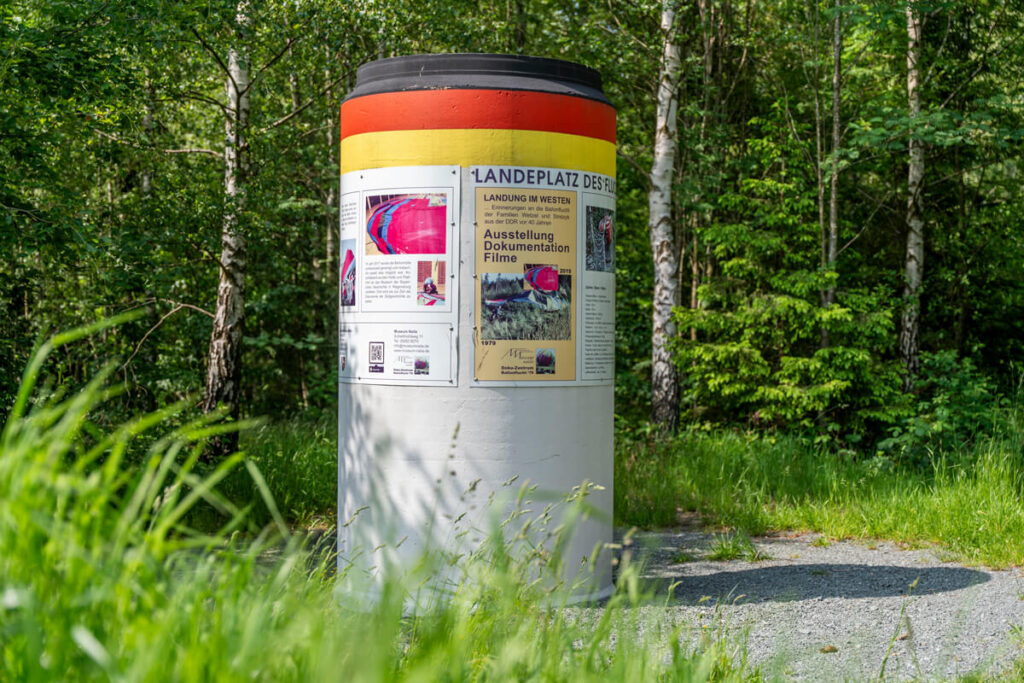
10. Hike “Am Jägersteigen”
At the end of my Franconian Forest trip, I took a very nice hike that I would like to mention here. The almost 6 km long circular hike “Auf Jägersteigen” near Langenau led me along narrow paths through dense forests, past rocks, old ramparts, and beautiful views.
The tour only took about 2 hours, is very well signposted (designation: DÖ 94), and starts in Langenau. You should definitely wear sturdy shoes, as the paths are steep and narrow in places. There are no places to stop for refreshments along the way, so pack a few snacks in your hiking backpack.
- Starting point: Langenau, Forsthaus (Geroldsgrün)
- Duration: 2 to 2.5 hours
- Length: approx. 6 kilometers
- Route: here you can find the route
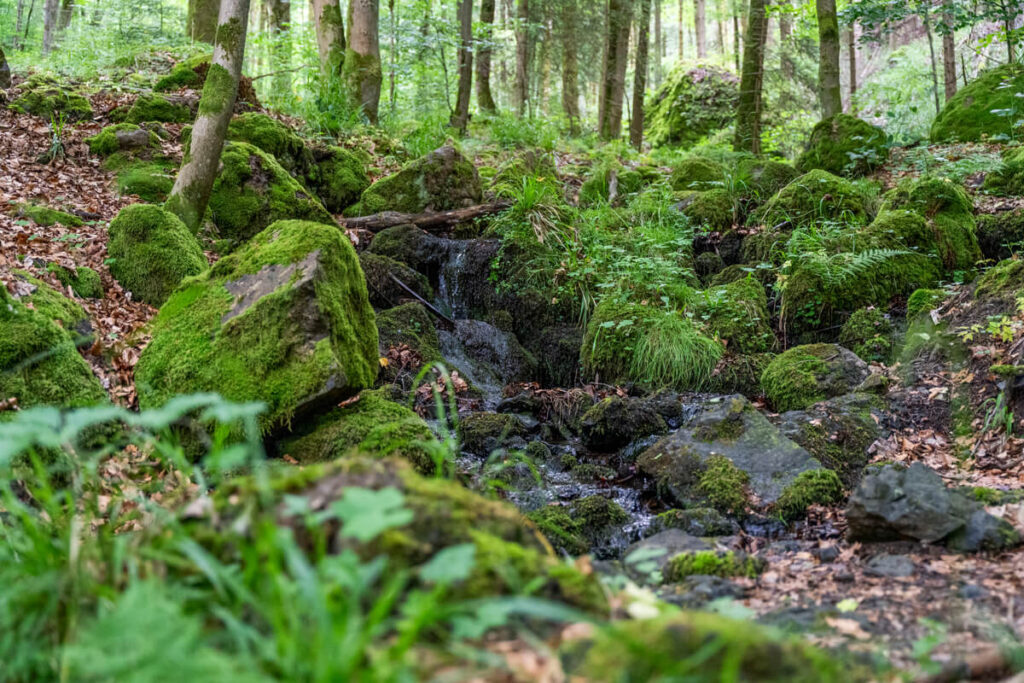
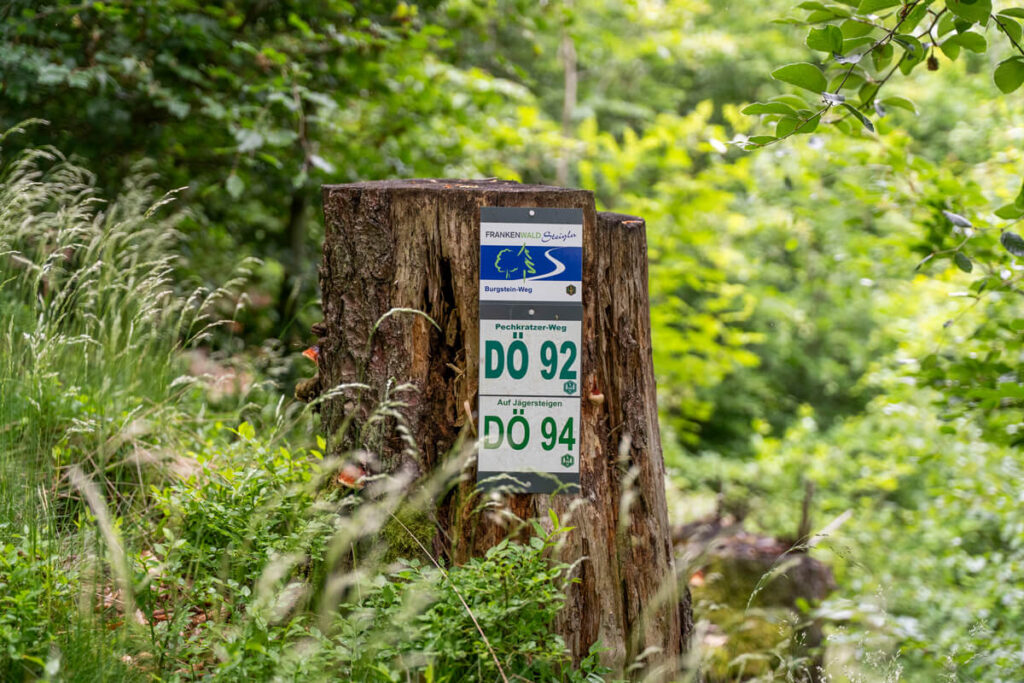
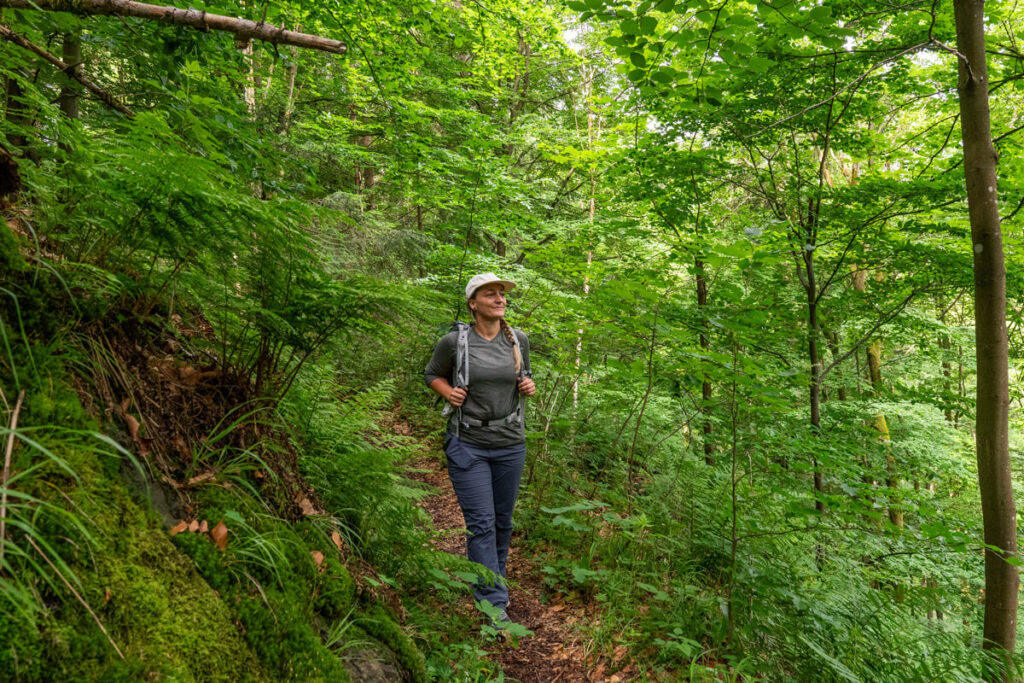
3 Exciting Towns for a Day Trip
In the Franconian Forest itself, there are many charming little towns, such as Kronach, Hof, Lichtenberg, Helmbrechts, or Schwarzenbach am Wald. I didn’t visit any of them this time, but I know three exciting towns in the area that are perfect for a day trip.
1. Kulmbach
- Travel time from Bad Steben: 45 minutes
- Highlights: Old Town, Plassenburg Castle with Tin Figures Museum, Red Tower
- Accommodation: Hotel Weisses Ross*
A day trip to Kulmbach is definitely worthwhile. The small town is known for its beer tradition, the Plassenburg Castle with the Tin Figures Museum, and the pretty old town with half-timbered houses and small cafés. Kulmbach is easy to explore on foot and is perfect for a cool mix of history, enjoyment, and strolling.
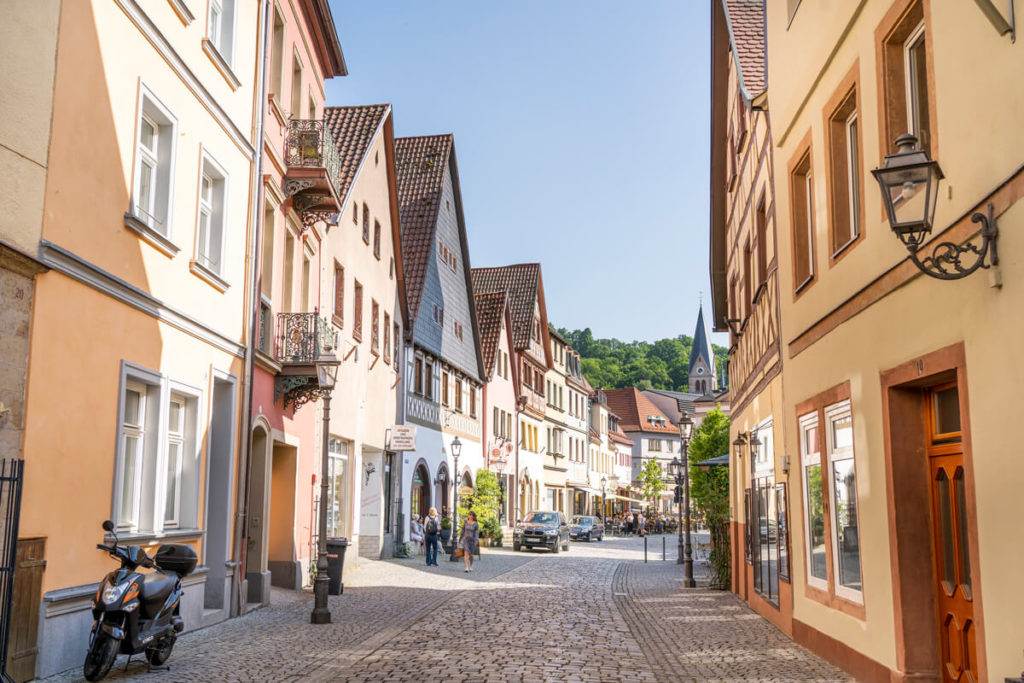
2. Bayreuth
- Travel time from Bad Steben: 55 minutes
- Highlights: Margravial Opera House, Old Town, Hermitage…
- Accommodation: Liebesbier Urban Art Hotel*
Bayreuth is best known for Richard Wagner, but has much more to offer. The baroque old town, the impressive The Margravial Opera House and the Hermitage with its water features are just as worthwhile as a stroll through the beautiful Court Garden. And you shouldn’t miss the Maisel’s Beer Experience in Bayreuth either.
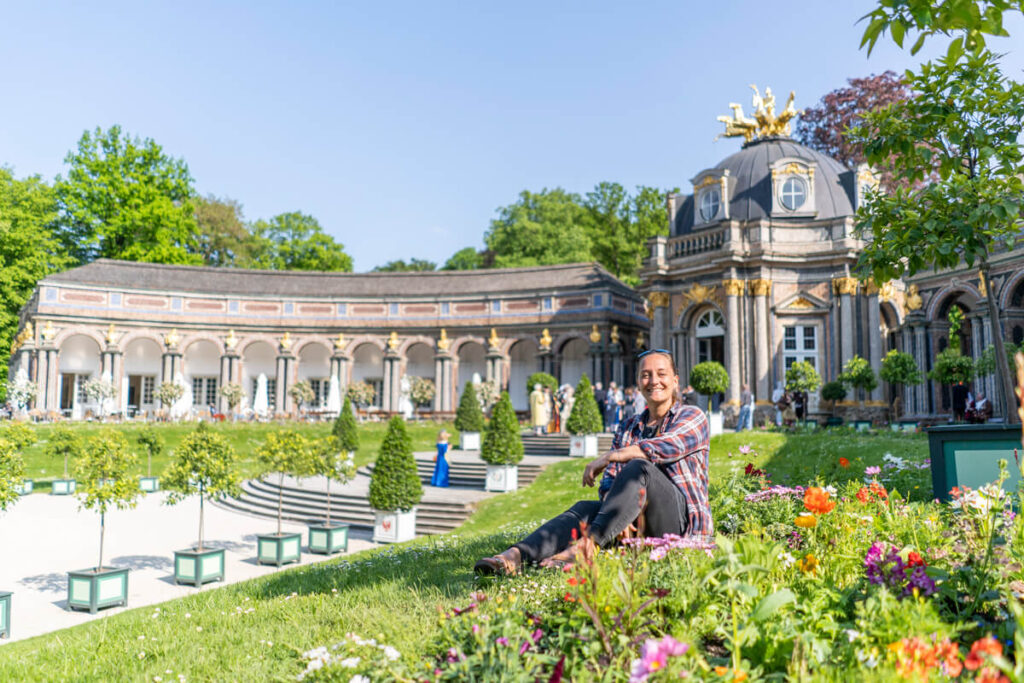
3. Coburg
- Travel time from Bad Steben: 65 minutes
- Highlights: Veste Coburg, Old Town, Ehrenburg Castle, Market Square
- Accommodation: Hotel Hahnmühle 1323*
In Coburg you can expect a charming mix of Old town charm, castle romance, and half-timbered houses. Coburg Fortress towers high above the city, offering magnificent views and a fascinating history. Down in the town, you can stroll through the small alleys and sample regional specialties.
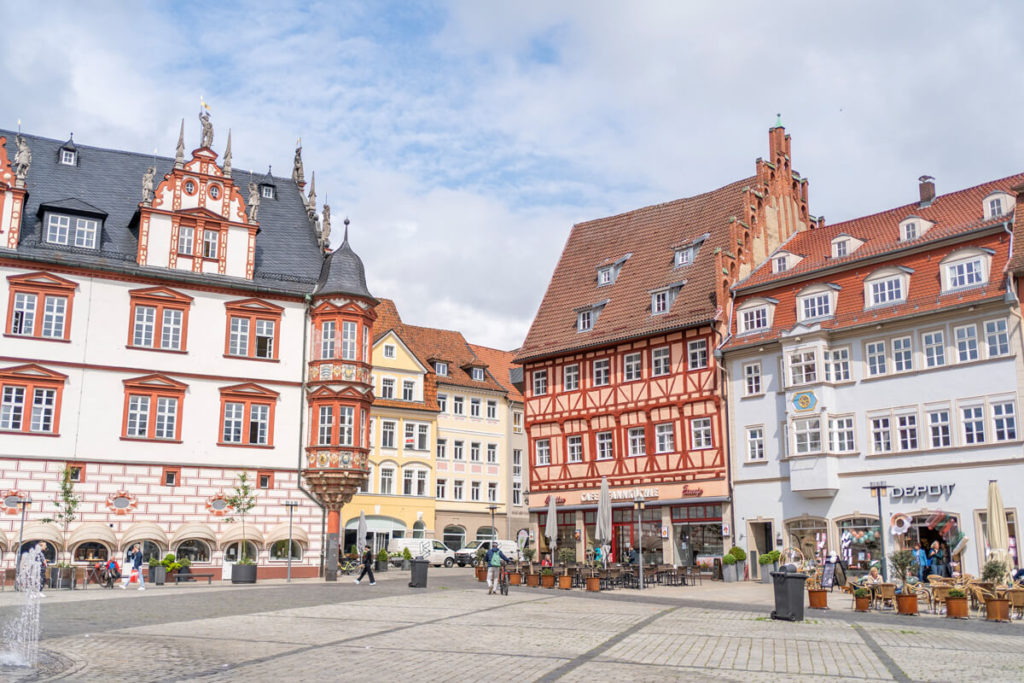
Our Hotel Tip: Relexa Hotel Bad Steben
During my time in the Franconian Forest, I stayed at the truly beautiful Relexa Hotel* in Bad Steben. This 4-star hotel is located in the middle of the spa gardens and was the perfect starting point for all my tours and excursions. I had a modern, comfortable room with a balcony, a comfortable double bed, a seating area, and a bathroom with a shower.
I also particularly liked the spacious wellness area with an indoor pool, saunas, a shower grotto, a steam bath, and various relaxation rooms. In the morning, there was also a delicious breakfast buffet, and in the evening, a small but fine menu in the winter garden restaurant.
Plus points: You can rent bicycles and e-bikes at the hotel for a fee. There is also a free shuttle to and from the train station in Bad Steben. There is also a free activity program, including relaxation training. Book a room here*.
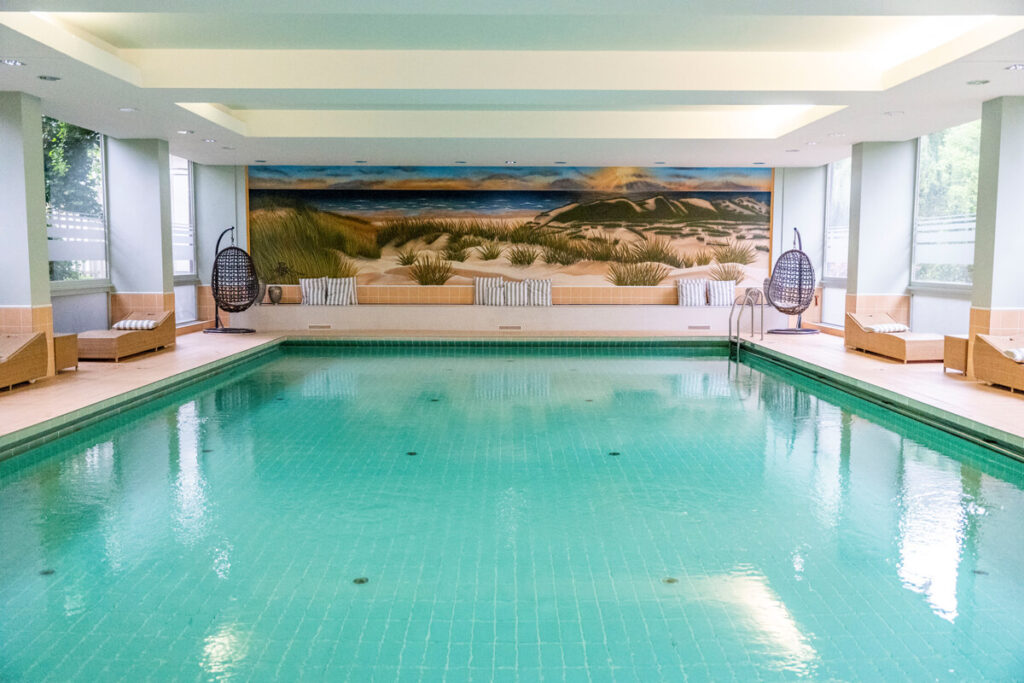
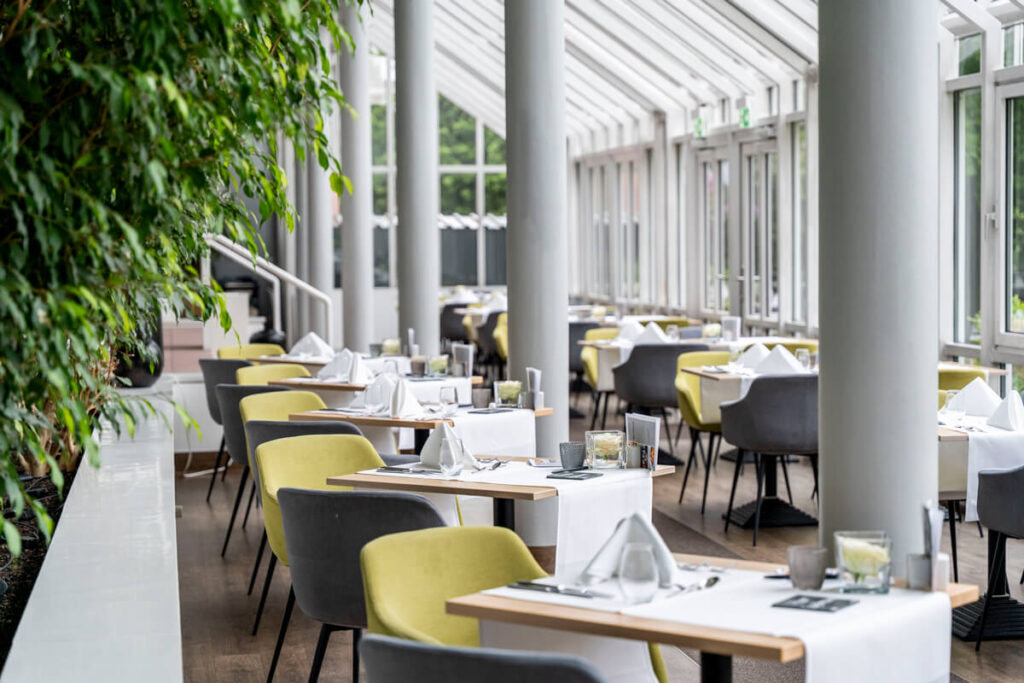
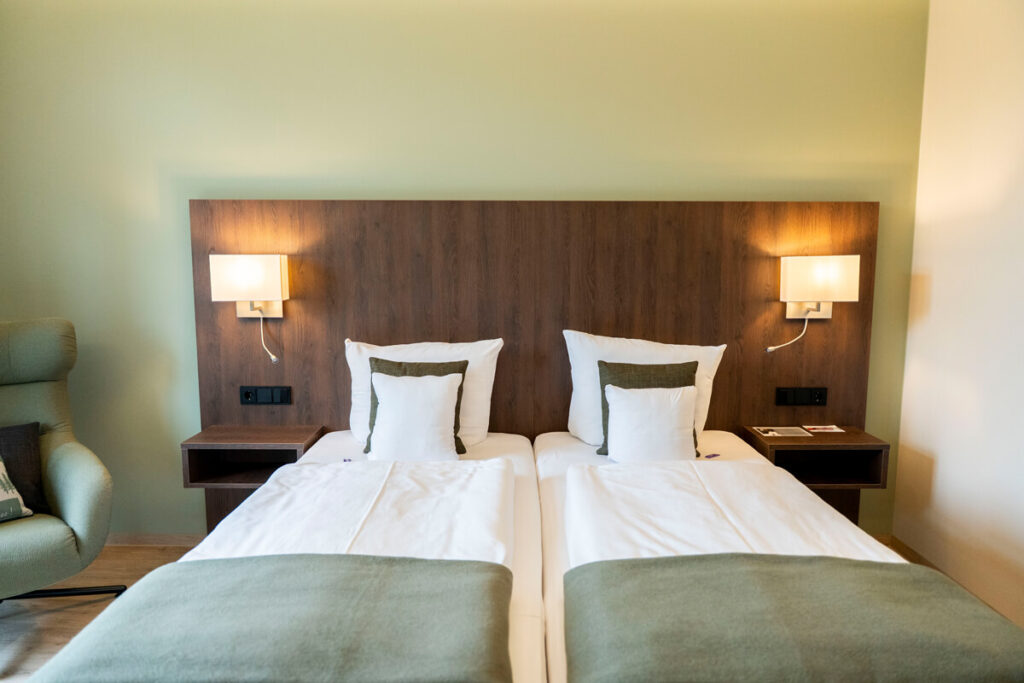
Travel reading for your vacation
If you’d like to learn more about the Franconian Forest in advance, you’ll find lots of exciting information and practical tips for your trip in these travel guides and magazines.
- 111 Must-See Places in the Franconian Forest*
- TRESCHER Franconian Forest Travel Guide: Around Kronach, Ludwigsstadt, and Bad Steben*
- Franconian Forest Hiking Guide: The Most Beautiful Tours in the Franconian Forest*
- Free Franconian Forest Vacation Magazine
Conclusion: Is a Trip to the Franconian Forest Worth It?
Absolutely! If you like nature, peace, and relaxed hiking, the Franconian Forest is the right place for you. The region is pleasantly quiet, the trails are well signposted, and the landscape is truly beautiful. Perfect for a few days’ break with plenty of fresh air and small, charming towns that aren’t overcrowded.